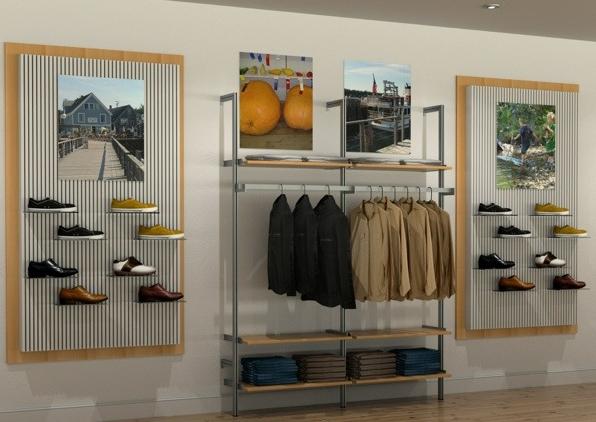It goes without saying that the displays play very significant role in retailing and retail outlet. An attractive and informative displays can help in large volume of sales in terms of goods and services.
In building a retail display, some fundamental rules should be followed to get best out of these where good deal of treasure, talent and time is involved on the part of retailer. This golden rules are:
1. Achieve Balance
It is important to make sure that the display appears balanced to the viewer, in building display. This is achieved by arranging products and props in a particular way. A display may have formal or informal balance. “Formal” balance is achieved by balancing on each side of the center one more or more similar items. “Informal” balance is achieved by balancing on opposite sides of the center dissimilar items. The effects produced by informal balance are less peaceful and less obvious but often more interesting than the effects produced by formal balance.
2. Provide for a Point of Dominance
All displays should have a central point that affects the viewer’s eyes. This point may be established by using a prominent piece of-merchandise, dramatic color or streamers arranged to center on an object. A point of dominance acts as a focal point on which the viewer’s eyes rest and from which the eyes move to other parts of the display.
3. Provide for Proper Eye Movement
Too many displays do not direct the eyes in a systematic fashion, but permit them to jump from so one end of the display to other. If his eyes move indiscriminately around the display, the viewer will not see some of the merchandise in the display and will not understand the intended message. To achieve proper eye movement, merchandise should be displayed in such a way that the eyes move from one part of the display to another. Sometimes the use of streamers facilitates this objective.
4. Provide for Gradation
Gradation is the sequence in which items are arranged. For example, small items are usually placed at the front of the display, medium sized items further back and large-sized items at the rear. This provides harmony and creates an appealing illusion.
5. Place at Eye Level Merchandise Designed to Create Deep Impact
Because, viewers tend to look straight ahead, merchandise placed at eye level is most likely to be seen. Neither too high nor too low positions to be avoided. No specific height can be said, but normal 3.5 foot to 5.5 foot can be the safe range.
6. Group Merchandise
Too many merchants place one item after another in long row. Shoe stores, jewellery stores and mass merchandisers, especially tend to do this. Stores with large amounts of one item or with one line of goods are likely to build display in this manner. Merchandise should be grouped so that the customers eyes travel from group to group. If this is not done, the window has a junky appearance and the customer has difficulty in picking out the merchandise being displayed.
7. Give Merchandise Sales Appeal
All windows should display the best merchandise. Displays take up valuable space, and to use slow selling items for display merchandise is to waste the potential in a display. One way to generate sales appeal is to choose the most important feature of merchandise being displayed and then emphasize it. Another way is to have the display tell a story. In other words, build the display around a theme, such as a back-to school or Valentine theme. Customers relate best when they can grasp the total picture; they imagine themselves in the situation and are able to understand the role of merchandise might play.
8. Keep Displays Clean and Neat
Merchandise who permit dust to accumulate on a display, who leave dead months lying around, who do not dust display merchandise and props, who do not wash glass display fixtures and windows to eliminate the blue film that frequently collects on them, who do not replace burnout light bulbs and who do not replace merchandise that has been taken out are guilty of poor display maintenance.
9. Use Color Properly
Do not use colors in an offensive way. Different colors are appropriate for displays of women’s wear and displays of men’s wear. Pinks and greens are less appropriate for men than women. The featured items should be in the brightest colors. Light colors deepen a display space, seemingly increasing its size. Dark colors do the opposite.
10. Use Name Cards and Show Cards
Every window should have the name of the store on a name card or printed one on the window. Too many times customers must step back from the window and look up to find out which store is running the display. Show cards are informative and give the sales message and, therefore, act as sales agents.
11. Plan Displays in Advance
The proper procedure is to sketch out a display prior to its construction. This facilitates the gathering of merchandise to be used in the display and collecting of fixtures for display.
12. Do not Clutter-up the Display
Putting of too much merchandise in a small area spoils the displays. Keep display orderly. Clutter reduces the glitter of displays.
